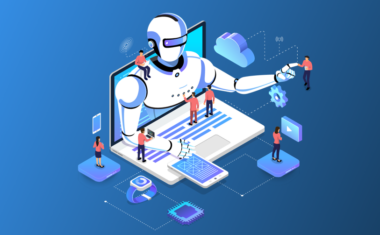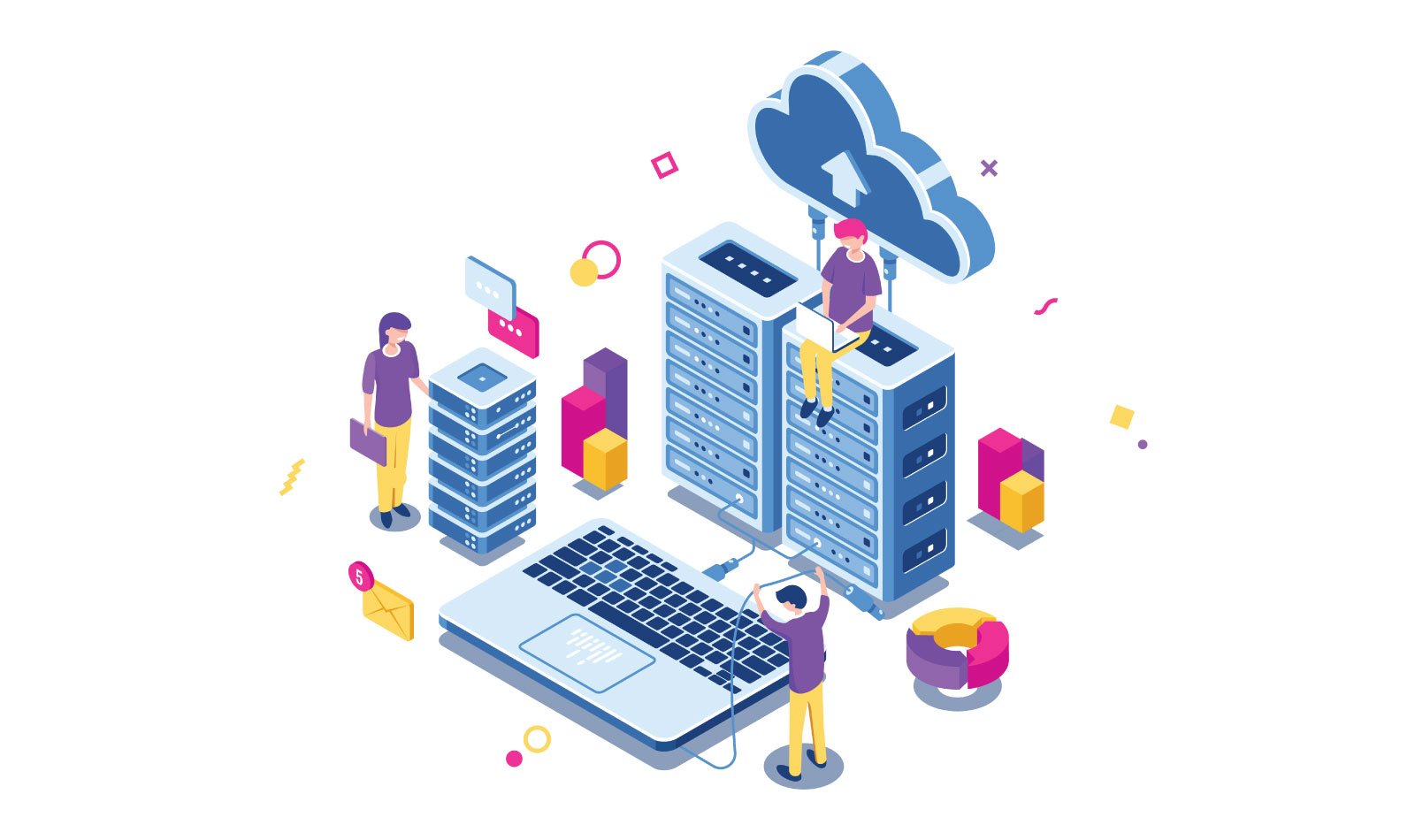So you want to become a data scientist? Listen up, aspiring data scientists! With a hot job market, lucrative salaries, and promising career opportunities, it’s a great time to become a data scientist. But what if you’re starting from scratch? Luckily, there is a myriad of different learning paths data scientists can follow. Becoming a data scientist generally requires a formal certification or qualification, but you can learn data science skills in the field in many different ways—from getting a college degree in Computer Science to attending bootcamps that teach programming languages and data visualization and machine learning models to teaching yourself analysis and the fundamentals of computer science. That means that learning data science doesn’t have to be a full-time job. Many data engineers, data analysts, data scientists and other data professionals have reached the top of their field by following a more unconventional path. A bachelor’s degree in data analysis isn’t the only way to become a data scientist and earn a higher than average salary as a data engineer or data scientist.
Not sure where to start? In this article, we’ll show you how to go from being a novice to being job-ready in the field of data science and your new data science career!
Why Data Science?
Data science has risen to the forefront of the software industry because companies have begun to understand the importance of data. Sourcing and processing data effectively is a must for growing organizations today, which is why they need people like you with the right data science skills. Companies leverage data scientists , data analysts, and other data professionals to generate insights that can help them outmaneuver the competition and multiply profits.
Because of this, the field of data science is seeing an abundance of opportunities. The American Bureau of Labor Statistics has projected that the field will grow by almost 30% through 2026. That’s partially why US News has listed “Data Scientist” as one of the top three technology jobs. Learning data science can pay off – quickly.
Learning data science and completing a data science project won’t be easy, but becoming a data scientist is worth it.
With companies competing for the best talent, salaries are rising. The University of San Francisco reports that the graduates of its MS in Data Science program earn a median salary of $125,000. More than 90% of graduates have landed a full-time role within three months of completing the program – when you become a data scientist, you’re virtually guaranteed employment.
Before you dive headfirst into the world of data science, you may be wondering: what does a data scientist actually do? Let’s find out.


Become a Data Scientist. Land a Job or Your Money Back.
Build job-ready skills with 28 mini-projects, three capstones, and an advanced specialization project. Work 1:1 with an industry mentor. Land a job — or your money back.
What Does a Data Scientist Do?
A data scientist turns data into meaningful insights. These insights guide upper management when making business decisions. Data scientists perform a number of different tasks and take on a number of different roles, so there’s no telling what your data science career will look like or where it could take you!
A data scientist will collect, clean and analyze data. Cleaning is always necessary, otherwise it’s too hard to analyze data in its unstructured form. There are usually missing entries, corrupted volumes, etc. So data scientists use statistical methods and engineering skills to clean that data.
Then, the data scientist will conduct an exploratory data analysis, in which they look for patterns in the data. Data scientists do this by writing algorithms and creating machine learning models which can be used to run experiments on datasets and uncover useful insights.
Data scientists then communicate their insights to other teams and management. This often requires data visualization and presentation skills.
When you become a data scientist, you will probably:
- Identify opportunities where data can be used to solve problems.
- Source data that can be valuable in solving the problem.
- Clean the data and ensure that it meets the organization’s standards for data accuracy.
- Employ algorithmic approaches and build models to generate insights.
- Use data visualization and storytelling to convey findings to various stakeholders.
Now that we know what a data scientist does, let’s look at steps to learn data science if you’re just starting out in the field.
Steps To Learn Data Science
-
Build a Strong Foundation in Statistics and Math
-
Learn Programming With Python and R
-
Get Familiar With Databases
-
Learn Analysis Methods
-
Learn, Love, Practice, and Repeat
-
Learn How To Use the Tools
-
Work on Data Science Projects
-
Become a Data Storyteller
-
Network
-
Always Be Learning
You’ll need to master a number of data science concepts, programming languages, and machine learning tools to become a data scientist. Here are the steps to learn data science from scratch.
Build a Strong Foundation in Statistics and Math
Like many other science disciplines, math is foundational to working in data science, and will give you a strong theoretical foundation in the field. Data scientists need these skills to complete their work.
When working in data science, statistics and probability are the most important areas to grasp. Most of the algorithms and models that data scientists build are just programmatic versions of statistical problem-solving approaches.
If you’re a beginner with statistics and probability, you can start with a 101 course. Use this as an opportunity to learn basic concepts like variance, correlations, conditional probabilities, and Bayes’ theorem. Doing this will put you in a good position to understand how those concepts translate to the work that you will do as a data scientist.
Remember, when you start learning data science, it’s easy to get overwhelmed – keep persisting! Becoming a data scientist means you need to learn data wrangling, get in the swing of organising data, master fundamental concepts like predictive modeling, a programming language, gain working knowledge of different tools and data sets you’ll encounter, draw actionable insight from information, and complete real-world projects in data analytics. Strong communication skills are as important as technical skills in the field. Potential employers value the necessary skills over anything else – even a bachelor’s degree.
Here’s a video that covers a few of the mathematical concepts that you need to learn as a beginner in data science.
Learn Programming With Python and R
Once you’re familiar with the mathematical concepts you’ll need as a data scientist, it’s time to learn some programming languages and skills, so that you can turn all that math know-how into scalable computer programs. Python and R are the two most popular programming languages used in data science, so that’s a good place to start for all data scientists.
The Python and R programming language are good starting points for a few reasons. They’re both open-source and free, which means that anyone can learn to program in these languages. When you become a data scientist, you can program in both languages across Linux, Windows, and macOS. Most importantly, these languages are beginner-friendly, with syntax and libraries that are easy to use.
You can accomplish almost any data science task using Python and R together, but they do have their individual strengths in certain areas. Python tends to work better when you’re wrangling massive volumes of data. Data scientists say it is superior to R when it comes to deep learning tasks, web scraping, and workflow automation. You’ll need to know both when becoming a data scientist.
R is a language that’s best for translating statistical approaches to computer models. It has a wealth of statistical packages that you can apply to datasets quickly and easily. That makes building statistical models easier in R as compared to Python.
Ultimately, the choice between Python and R comes down to your career goals. Python is a better starting point if you want to work in areas of data science like deep learning and artificial intelligence. Start with R if you’re more inclined towards pure statistical approaches and model building. And remember, you can always learn the other one down the line. You may also want to use your knowledge to create your first data science project – it can give you the edge if your goal is becoming a data scientist.
Get Familiar With Databases
Data scientists need to know how to work with databases so they can retrieve the data they’re working with and store it after processing. If you want to become a data scientist, you’ll need these skills!
Structured Query Language (SQL) is one of the most popular database query languages. It allows you to store new data, modify records, and create tables and views. Big data tools like Hadoop have extensions that allow you to make queries using SQL, which is an added advantage. Here is a post with 7 resources to help you learn big data easily.
Becoming a data scientist means you don’t need a deep understanding of database technologies. Leave that to the database administrators. As a data scientist, you just need to understand how relational databases work and learn the specific query commands to retrieve and store data.
Learn Analysis Methods
There are various methods that data scientists can use to analyze a dataset. The specific approach that you employ depends on the problem that you’re looking to solve and the nature of the data that you’re using. As a data scientist, your job is to have the foresight required to know which method will work best for a particular problem.
A few analysis techniques are commonly used in the industry. That includes cluster analysis, regression, time series analysis, and cohort analysis. This post covers the details of all the popular data analysis techniques you’ll use as a data scientist.
As a data scientist, you don’t need to know every data analysis method out there. It’s more important that you understand the uses of a particular approach. The best data analysts are the ones who can quickly pair problems with data analysis techniques.
Get To Know Other Data Science Students
Abby Morgan
Data Scientist at NPD Group
Peter Liu
Business Intelligence Analyst at Indeed
Hastings Reeves
Business Intelligence Analyst at Velocity Global
Learn, Love, Practice, and Repeat
Once you’ve gone through the process and informed yourself about how to learn data analysis and all the different methods, you can start working on beginner projects.
But remember, as a data scientist, it’s more important to have a strong functional understanding of everything you’ve learned so far, rather than having a surface-level understanding of a wide range of topics. Practice what you study to make sure that you understand it.
For example, let’s say you’re learning about the concept of a weighted mean. Don’t just stop at learning the definition. Try to implement a program in Python that calculates the weighted mean of a dataset. Learning by doing helps you gain a deep understanding of the concepts that you learn.
Learn How To Use Data Science Tools
Data tools streamline the work. For example, Apache Spark handles batch processing jobs while D3.js creates data visualizations for browsers. This post contains information on some of the other popular data science tools.
At this stage, you don’t need to master one particular tool. You can do that when you actually start a job and know which tools your company requires. At this point, it’s enough to pick one that seems interesting and play around with it. The goal is to get a basic idea of the tools and what you can achieve with them.
If you have a particular company that you want to work at, then you can look at the job descriptions they publish. They’ll usually mention tools like Hadoop and Tensor Flow. You can familiarize yourself with those tools if you want to work at that particular organization.
Work on Data Science Projects
Now it’s time to tie everything together by building personal projects. Let’s take a look at a couple of examples of what these projects could look like.
Sentiment Analysis
Sentiment analysis is the process of inferring the sentiments expressed in a particular text. You might try to use a binary (positive or negative sentiment) or go with a more granular approach and label texts on a variety of emotions such as happy, excited, or curious.
You can perform a sentiment analysis on any text on the internet. Social media feeds are often a good source for this kind of data and you could analyze a particular hashtag for your sentiment analysis project.
Recommendation System
Let’s say you’re building a movie recommendation system. The MovieLens datasets can serve as a source for your data. You can then build your recommendation system based on considerations such as genre, actors, runtime, etc.
These are just a couple of examples. Do something that you feel passionately about and see how you can unearth some insights using data.
Become a Data Storyteller
Data scientists need to communicate their findings in a way that their colleagues can understand. This is where the power of storytelling comes into play. Here are three main components of the data storytelling practice:
Data
The data you corral from your analytical process will serve as the starting point for your story.
Narrative
A narrative is a story and context that you want to communicate to your audience.
Visualizations
These are graphic depictions of data. You can use graphs, charts, videos, and diagrams to support your narrative in a way that’s easy for your audience to understand.
Network
If you’re ready to start looking for a data science job, it’s also important to network with people in the industry, in addition to working on personal projects and crafting your resume.
There are many ways that networking can help when you’re just starting your data science journey. Talking to data scientists can help you understand the state of the industry and what it’s like to work in. Talking to recruiters can give you insights into their interview process and possibly help you land a job. You can also gain a lot by talking to people who understand different industries and how they’re using data to make decisions.
For all those reasons, it’s important to network as a young data scientist.
Always Be Learning
Your learning journey doesn’t end after you build a few projects or land a job. Data science is constantly evolving and you need to keep evolving too.
You should be well-informed of progress in the industry. If you don’t know what’s changing, you won’t know what you need to learn. Follow influencers in the field and read industry newsletters.
There are various certifications to upskill yourself as a data scientist. We’ve compiled a list of the best ones here.
Related Read: How To Become a Data Scientist
Can You Learn Data Science on Your Own?
You can learn data science on your own with online courses or even YouTube videos. There is no dearth of learning materials on the Internet if you’re working towards a career in this field.
That said, self-learning lacks structure, and you might not know what important elements you’re missing. Data science courses and bootcamps are a happy medium for those looking for independence and support, as they provide an experienced teacher and cohort setting to offer feedback.
Data Science FAQs
How Long Does It Take To Learn Data Science?
It depends on how you pace yourself, but it is recommended that you give yourself at least six months before you consider yourself a beginner data scientist. This will give you the opportunity to learn the requisite skills and implement them in the form of personal projects.
Who Can Work in Data Science?
There really aren’t any limitations on who can work in data science. It is possible to work in the field even without a college degree. As long as you have the right theoretical foundations and projects that you can show recruiters, anyone can land a job in the industry.
Related Read: How To Get Into Data Science (Without a Data Science Degree)
Is Data Science Hard To Learn?
Data science is not hard to learn if you choose the right learning methodologies and materials. Think about how you learn and find resources to accommodate that. For example, some may choose to teach themselves using videos, while others prefer mentor-led bootcamps. Don’t be afraid to experiment with a few different learning methodologies and commit to one only after you have evidence that it works for you.
Is Data Science a Stressful Job?
According to US News, data science is a job with an average level of stress. You can make your job easier by better managing your tasks and communicating with your manager if you’re overwhelmed. Data science is more flexible than other jobs, so you could try working remotely or as a freelancer if more conventional working modes stress you out.
What Is Machine Learning and Does a Data Scientist Use Machine Learning?
Machine learning is a type of artificial intelligence (AI) that allows software applications to become more accurate in predicting outcomes without being explicitly programmed to do so. Machine learning algorithms use historical data as input to predict new output values.
A data scientist might use machine learning to solve a variety of problems, such as:
- Predicting customer churn: This is a common problem for businesses, and it can be solved using machine learning techniques. Machine learning algorithms can be used to analyze customer data to identify patterns that indicate which customers are likely to churn.
- Fraud detection: This is another important problem that businesses face, and it can be solved using machine learning and statistical techniques. Machine learning algorithms can be used to analyze financial data to identify patterns that indicate fraudulent activity.
- Recommender systems: These systems can be used to recommend products, movies, or other items to users. They are often used by businesses to improve customer satisfaction. Machine learning algorithms can be used to analyze user data to identify patterns that indicate which items a user is likely to be interested in.
What Is Big Data?
Big data is a term that describes the large and complex data sets that are generated by modern technologies and activities. These bigdata sets are so voluminous that traditional data processing software just can’t handle them. But these massive amounts of big data can be used to address business problems you wouldn’t have been able to tackle before.
Since you’re here…Are you interested in this career track? Investigate with our free guide to what a data professional actually does. When you’re ready to build a CV that will make hiring managers melt, join our Data Science Bootcamp which will help you land a job or your tuition back!
![How To Learn Data Science From Scratch [2022 Guide]](https://www.springboard.com/blog/wp-content/uploads/2020/07/how-to-learn-data-science-from-scratch-2022-guide.png)






